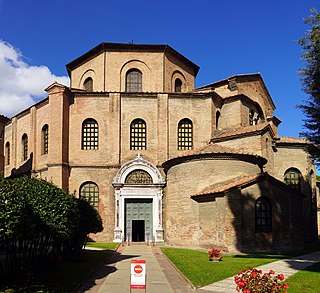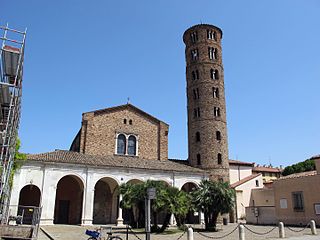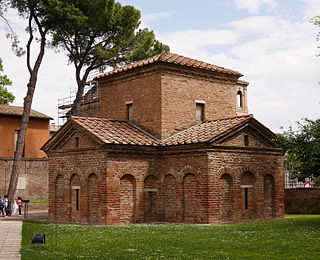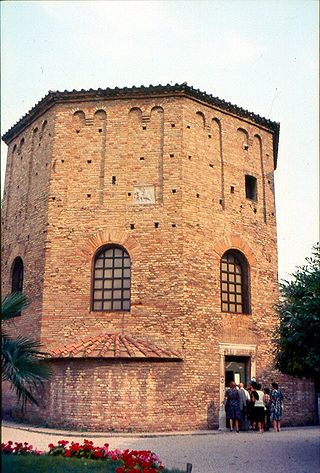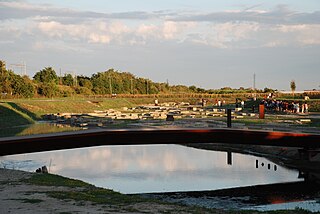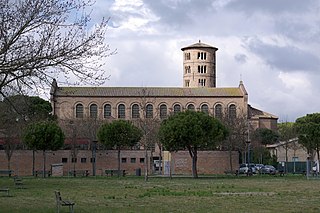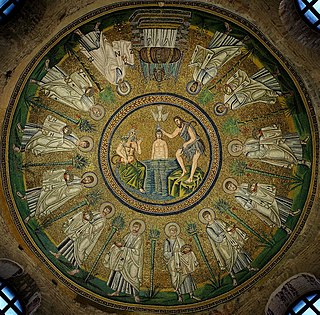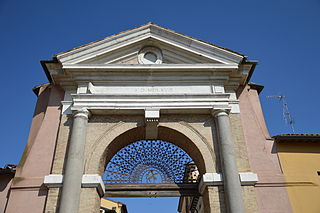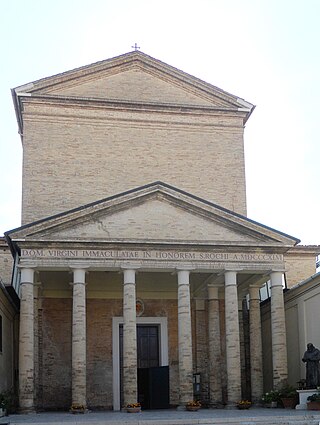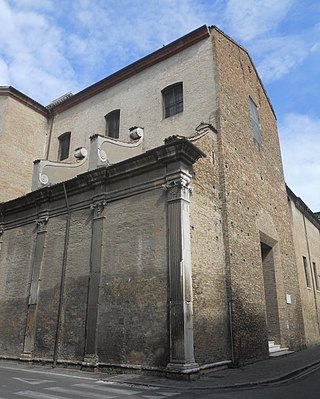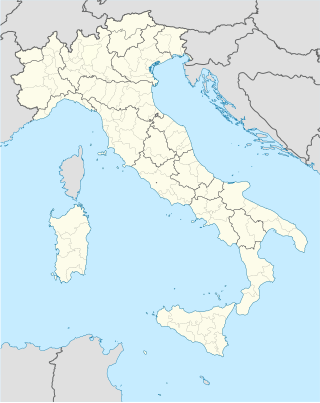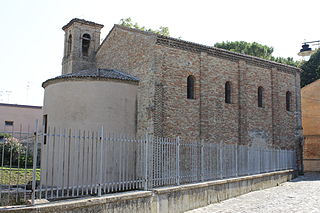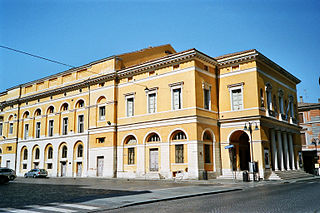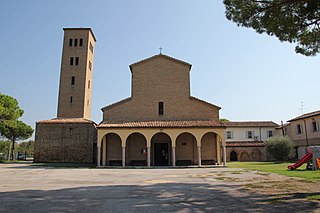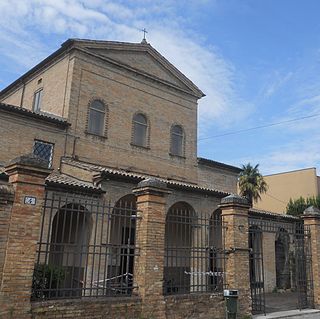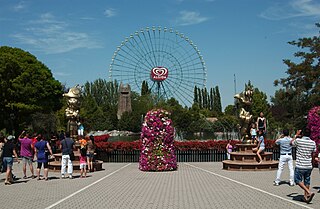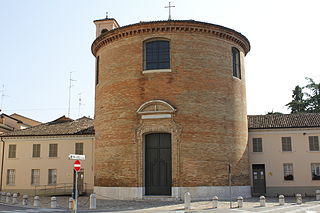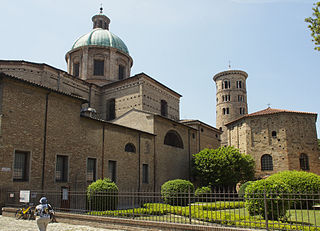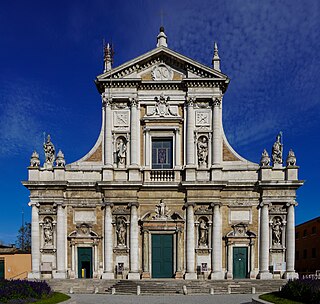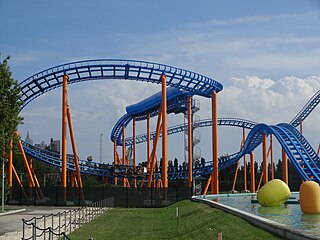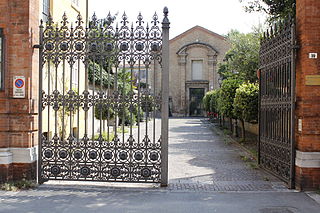26 Sights in Ravenna, Italy (with Map and Images)
Legend
Welcome to your journey through the most beautiful sights in Ravenna, Italy! Whether you want to discover the city's historical treasures or experience its modern highlights, you'll find everything your heart desires here. Be inspired by our selection and plan your unforgettable adventure in Ravenna. Dive into the diversity of this fascinating city and discover everything it has to offer.
Sightseeing Tours in RavennaActivities in RavennaThe Archiepiscopal Museum is located in Ravenna, Italy, next to the Baptistry of Neon and behind the Duomo of Ravenna. In the museum relics of early Christian Ravenna are preserved, including fragments of mosaic from the first cathedral church, and the chapel of Sant'Andrea, dating from the Gothic kingdom.
The Basilica of San Vitale is a late antique church in Ravenna, Italy. The sixth-century church is an important surviving example of early Byzantine art and architecture, and its mosaics in particular are some of the most-studied works in Byzantine art. It is one of eight structures in Ravenna inscribed on the UNESCO World Heritage List. Its foundational inscription describes the church as a basilica, though its centrally-planned design is not typical of the basilica form. Within the Roman Catholic Church it holds the honorific title of basilica for its historic and ecclesial importance.
The Basilica of Sant'Apollinare Nuovo is a basilica church in Ravenna, Italy. It was erected by the Ostrogothic king Theodoric the Great as his palace chapel during the first quarter of the 6th century. This Arian church was originally dedicated in 504 AD to "Christ the Redeemer".
4. Mausoleum of Galla Placidia
The Mausoleum of Galla Placidia is a Late Antique Roman building in Ravenna, Italy, built between 425 and 450. It was added to the World Heritage List together with seven other structures in Ravenna in 1996. Despite its common name, the empress Galla Placidia was not buried in the building, a misconception dating from the thirteenth century; she died in Rome and was buried there, probably alongside Honorius in the Mausoleum of Honorius at Old Saint Peter's Basilica.
5. Battistero Neoniano
The Baptistery of Neon is a Roman religious building in Ravenna, northeastern Italy. The most ancient monument remaining in the city, it was partly erected on the site of a Roman bath. It is also called the Orthodox Baptistery to distinguish it from the Arian Baptistery constructed on behest of Ostrogothic King Theodoric some 50 years later.
6. Porto romano di Classe
Classe was a commercial port located 4 km (2.5 mi) east south east from Ravenna, Italy. It was near the head of the Adriatic coast. For almost five hundred years it was an important strategic military port. When it was not being used as a military port, it was an important commercial port for the imperial capital of Ravenna in the Roman Empire. Classe comes from the Latin word classis, meaning fleet.
7. Basilica di Sant'Apollinare in Classe
The Basilica of Sant'Apollinare in Classe is a church in Classe, Ravenna, Italy, consecrated on 9 May 549 by the bishop Maximian and dedicated to Saint Apollinaris, the first bishop of Ravenna and Classe.
8. Arian Baptistery
The Arian Baptistry in Ravenna, Italy is a Christian baptismal building that was erected by the Ostrogothic King Theodoric the Great between the end of the 5th century and the beginning of the 6th century A.D., at the same time as the Basilica of Sant' Apollinare Nuovo.
9. Porta Sisi
Porta Sisi, formerly also called Porta Ursicina, Sisina, Ausisna, Cisa and, in modern times, Porta Mazzini, is one of the four historic gates of the city of Ravenna and is, together with Porta Adriana, Porta San Mamante and Porta Nuova, in continuous use since its erection.
10. Chiesa di San Rocco
The church of San Rocco is a Catholic place of worship in the city of Ravenna, in Emilia-Romagna, the seat of the parish of the same name, one of the most populous in the archdiocese of Ravenna-Cervia.
11. Sant'Agata Maggiore
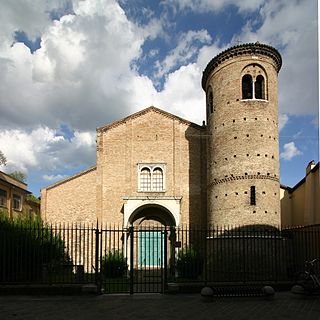
The basilica of Sant'Agata Maggiore is one of the oldest churches in Ravenna, located in the heart of the city, a few steps from the basilica of San Francesco and Dante's tomb. The church was built in the fifth century, although the current appearance is due to the restorations of the early twentieth century with which the church regained its original early Christian forms.
12. Chiesa di San Romualdo
The church of San Romualdo is located in the historic center of Ravenna, at the intersection of Via Alfredo Baccarini and Via Nicolò Rondinelli; closed to worship but not deconsecrated, it falls within the territory of the parish of Sant'Agata Maggiore, of the archdiocese of Ravenna-Cervia, but is municipal property.
13. Cappella Arcivescovile
The Archbishop's Chapel is a chapel on the first floor of the bishops' palace in Ravenna, Italy, the smallest of the famous mosaic sites of the city. It is a private oratory of Trinitarian bishops dating from the turn of the 6th century. Although commonly attributed to St. Peter Chrysologus, Archbishop of Ravenna from 433–450, the chapel was actually built by Peter II shortly after he became archbishop in 495. The mosaics date from the original construction, or soon after.
14. Chiesa dello Spirito Santo
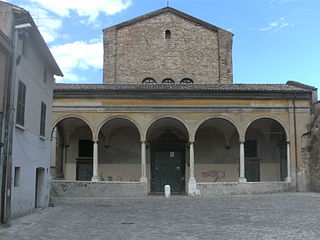
The church of the Holy Spirit, an ancient cathedral of the Arian cult built in the early sixth century by Theodoric, was originally dedicated to the Hagìa Anastasis or the Holy Resurrection of the Lord. This dedication is not surprising since it should be remembered that the ties between Greece and Ravenna were very much alive for centuries during the Byzantine Empire. As for the annexed Arian Baptistery, shortly after the death of Theodoric in 526, it was reconsecrated by Bishop Agnello to Catholic worship and dedicated to St. Theodore, Greek soldier and martyr of Amasea in Pontus.
15. Museo del TAMO
The Domus del Triclinio is a Roman domus of the II-III century BC, discovered in 1980, during the construction of the new headquarters of the Banca Popolare di Ravenna. The house has been reconstructed in its entirety inside the Church of San Nicolò, in an exhibition itinerary consisting of a triclinium dining room, complete with furnishings, together with other materials from Italian archaeological museums.
16. Chiesa di Santa Croce
The church of Santa Croce is a church built in Ravenna by the Roman empress Galla Placidia; between the late fourteenth century and the beginning of the seventeenth century the imposing church was mutilated of some of its parts. The so-called mausoleum of Galla Placidia was initially a chapel accessible from the narthex of this church, but subsequent demolitions made it an independent building.
17. Teatro Dante Alighieri
The Teatro Comunale Alighieri is an opera house located at 2 Via Mariani in Ravenna, Italy and designed by the Venetian architects, Tommaso Meduna and his brother, Giambattista who had designed the second La Fenice theatre after the fire of 1836. The new Teatro Comunale Alighieri was inaugurated on 15 May 1852 with a production of Meyerbeer's Robert le diable, followed by Giovanni Pacini's Medea.
18. Chiesa di Santa Maria in Porto Fuori
The church of Santa Maria in Porto Fuori is a sacred building located near Ravenna, of historical importance for its origins before 1100 and the subsequent phases of architectural and artistic development; is a Catholic place of worship declared a parish on 15 August 1915 by the decree "Sancta Maria in portu extra moenia" . Completely destroyed by bombing in 1944, it was rebuilt in the same location.
19. Chiesa di Santa Maria degli Angeli
The church of Santa Maria degli Angeli is a Catholic place of worship in the center of Ravenna, located in via Oberdan 6, seat of the rectory of the same name within the territory of the parish of San Giovanni in Fonte.
Wikipedia: Chiesa di Santa Maria degli Angeli (Ravenna) (IT)
20. Eurowheel
Eurowheel is a 92-metre (302 ft) tall Ferris wheel at the Mirabilandia amusement park near Ravenna, in Emilia–Romagna, Italy. It is known for its views over Ravenna and nearby beaches, and its 50,000 light bulbs are said to make it the brightest Ferris wheel in the world.
21. Santa Giustina
The church of Santa Giustina is a Catholic place of worship in the historic center of Ravenna, located in Piazza Duomo, to the right of the cathedral; it falls within the territory of the parish of San Giovanni in Fonte and is the seat of the rectory of the same name.
22. Duomo di Ravenna
Ravenna Cathedral or Metropolitan Cathedral of the Resurrection of Our Lord Jesus Christ is a Roman Catholic cathedral dedicated to the Resurrection of Jesus Christ in the city of Ravenna, Italy. Formerly the archiepiscopal seat of the Archdiocese of Ravenna, it is now the seat of the archbishops of Ravenna-Cervia.
23. Santa Maria in Porto
The Basilica of Santa Maria in Porto was an important church in Ravenna, not far from Porta Nuova, on the via Roma, the north–south high street across the historic city centre. It houses the Greek Madonna.
24. DiVertical
Divertical is a water coaster roller coaster, located in the Mirabilandia amusement park, in the Ravenna area. It is the highest water coaster in the world, as well as the highest roller coaster in Italy.
25. Basilica di San Francesco
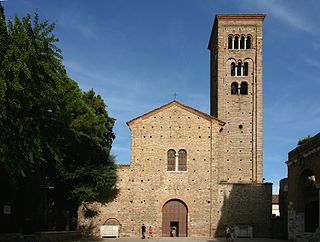
The Basilica of San Francesco is a major church in Ravenna. It was first built in 450 by Neo, bishop of Ravenna, and dedicated to saint Peter and Saint Paul. It was later also known as the Church of the Apostles. In the second half of the 9th century and over the course of the 10th century, the earlier church was demolished to build a larger one and a tall bell tower, both of which survive. This new church was dedicated to Saint Peter and named San Pietro Maggiore. It was handed over to the Franciscans in 1261 and rededicated to Francis of Assisi.
26. Teatro Rasi
The Luigi Rasi theater is a small prose theater located in the center of Ravenna. Built in the last decade of the nineteenth century in the former monastic church of Santa Chiara, since 1991 Rasi has been home to Ravenna Teatro, a theatrical production center founded by the theater companies Theater of the Albe and dramatic vegetable.
Share
How likely are you to recommend us?
Disclaimer Please be aware of your surroundings and do not enter private property. We are not liable for any damages that occur during the tours.

